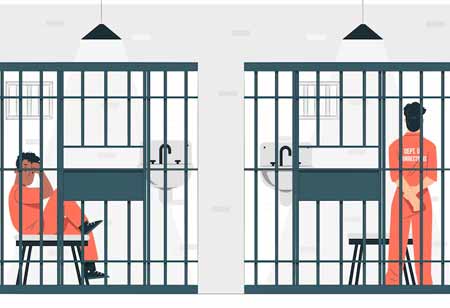THANK YOU FOR SUBSCRIBING
Be first to read the latest tech news, Industry Leader's Insights, and CIO interviews of medium and large enterprises exclusively from Gov CIO Outlook
THANK YOU FOR SUBSCRIBING

By
Government CIO Outlook | Tuesday, October 07, 2025
Stay ahead of the industry with exclusive feature stories on the top companies, expert insights and the latest news delivered straight to your inbox. Subscribe today.
Fremont, CA: Correction policies have significantly transformed over the past few decades, influenced by changing societal norms, technological advancements, and increased rehabilitation focus. These policies are designed to be human-centered and data-driven, with a clear commitment to reducing recidivism through innovative methods.
Correctional practices in the modern world incorporate punitive models in rehabilitation frameworks. Traditional methods involve incarceration and other forms of confinement, which often prove ineffective. Future policies focus on education, vocational training, and mental health so inmates can effectively reintegrate into society after serving their sentences. Most of these changes are systemic, with issues such as poverty and poor mental health diagnoses.
Integrating technology in corrections transforms operations, as predictive analytics identify individuals at a higher risk of recidivism, and digital monitoring systems like ankle bracelets reduce overcrowding. Virtual reality programs are emerging as a tool for rehabilitation, providing immersive experiences to teach conflict resolution and job skills in a controlled environment.
Community-based corrections programs are now gaining popularity as alternatives to the traditional incarceration of offenders. Probation, parole, and restorative justice programs are more about accountability and reintegrating into the community than isolation. Restorative justice aims explicitly to heal the harm that crime has caused through facilitated dialogue between victims and offenders. It helps in evoking empathy and mutual understanding and can significantly reduce reoffending.
Mental health and substance abuse treatment are becoming cornerstones of corrections policies. Increasing recognition of the intersection between mental health issues and criminal behavior has led to the expansion of specialized courts and diversion programs. These initiatives focus on treatment rather than punishment for individuals whose offenses are closely tied to mental health or addiction struggles. Such policies address the needs of the individual while also alleviating the burden on overcrowded correctional facilities.
Public perception and advocacy are cornerstones of future corrections policies. Grassroots activism and advocacy groups are increasingly determining criminal justice system legislation. Public opinion and advocacy are forging a way toward more humane and equitable policies from lawmakers who recognize that citizens want justice.
Systemic inequalities continue to be a significant concern, particularly regarding racial disparities in imprisonment rates. Future legislation should address and reduce these inequalities to ensure that justice is equitable, from the point of arrest through to sentencing.
The future of corrections policies will be characterized by rehabilitation, technology integration, and community involvement. These changing policies address systemic issues while upholding human dignity, and they seek to reform the corrections system to serve individuals and society better.
I agree We use cookies on this website to enhance your user experience. By clicking any link on this page you are giving your consent for us to set cookies. More info

However, if you would like to share the information in this article, you may use the link below:
www.govciooutlookapac.com/news/evolving-trends-in-corrections-policies--nid-2402.html



